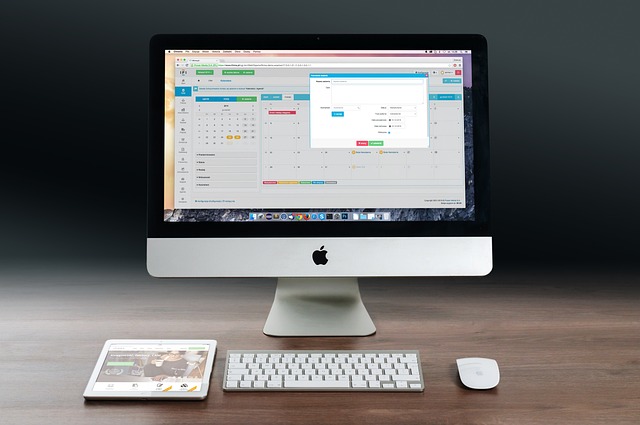If your iPad's battery life is noticeably shorter than when new or if it's charging more slowly, it might be time to consider replacing its battery. iPads have a 'Battery Health' feature that compares the current battery capacity to its original specifications and should indicate at least 80% or 85%, depending on the model, for optimal performance. A drop below this percentage is a clear sign of degradation. Software issues like glitches and unexpected shutdowns can also point to a failing battery. Replacing the battery with the right tools and following Apple's guidelines can restore performance and extend the device's lifespan. For a DIY fix, you'll need a P2 Pentalobe screwdriver, plastic opening tools, fine-tipped tweezers, a suction handle, and an anti-static wrist strap. Safety is crucial during this process—work in a well-ventilated area and be cautious with components to prevent damage or electrostatic discharge. After replacing the battery, perform diagnostic checks using the 'Settings' app to verify battery health and functionality, and test all device features to ensure they are working correctly. It's also wise to back up your data before and after the replacement. If issues persist post-replacement, seek further assistance from Apple support or a professional technician. Ensuring proper disposal of the old battery in accordance with local regulations is the final step in the process. Remember, regularly checking and maintaining your iPad's battery health can prevent future complications.
Considering an iPad battery replacement? Understanding the signs of a degraded battery and preparing with the right tools is crucial for a successful DIY fix or professional service. This comprehensive guide delves into essential equipment and safety measures required for replacing your iPad’s battery, ensuring optimal device performance post-replacement. Whether you’re a tech enthusiast planning to replace an iPad battery yourself or a technician looking to elevate your toolkit, this article provides a step-by-step approach tailored to facilitate the process efficiently and effectively. Learn about the must-have tools for iPad battery replacements and how to utilize them safely to extend your device’s lifespan.
- Understanding Your iPad's Battery Health: Signs It's Time for a Replacement
- Essential Tools and Safety Precautions for DIY iPad Battery Replacement
- Step-by-Step Guide to Safely Remove and Install an iPad Battery
- Professional-Grade Equipment for Technicians: The Must-Have Tools for iPad Battery Replacements
- Post-Replacement Checklist: Ensuring Your iPad's Optimal Performance After Battery Swap
Understanding Your iPad's Battery Health: Signs It's Time for a Replacement

When your iPad begins to exhibit signs of reduced performance, it may be time to consider replacing its battery. A key indicator of battery health is the device’s ability to hold a charge. If you notice that your iPad’s battery duration has significantly diminished from its initial capacity or if if it drains faster than usual, even with typical usage patterns, this could signal that the battery is degrading. Another important aspect to monitor is the maximum capacity as reported by the iPad itself. Most modern iPads have a feature that allows users to check their device’s battery health in the Settings app under Battery. Look for the ‘Battery Health’ section which provides a percentage indicating the battery’s capacity relative to its design specifications. A noticeable drop below 80% or 85%, depending on the model, is a strong indication that a replacement might be necessary. Additionally, persistent software issues or unexpected shutdowns can also point to battery-related troubles. These symptoms are often associated with an aging battery that no longer provides the necessary voltage and can lead to instability in your device. To ensure optimal performance and longevity of your iPad, it’s advisable to replace its battery when these signs are evident. This not only extends the life of your device but also prevents potential damage from a battery that can no longer function as intended. Always consult with a professional or follow Apple-recommended procedures when replacing an iPad battery to avoid any risks of harm or further damage to your device.
Essential Tools and Safety Precautions for DIY iPad Battery Replacement

When undertaking a DIY iPad battery replacement, having the right tools on hand is crucial for a successful and safe process. The first essential tool is a suitable screwdriver set, as iPads have various screw sizes securing different components. A precision screwdriver with a P2 Pentalobe tip is specifically designed to remove the screws along the edge of the device. Additionally, a plastic opening tool or spudger is necessary to gently pry open the iPad without causing damage to its delicate internals.
Safety should always be a top priority when handling electronic devices and their batteries. Ensure you work in a well-ventilated area to avoid inhaling any fumes released during disassembly. Wear an anti-static wrist strap to prevent electrostatic discharge that could harm the device’s components or affect your safety. A suction handle can be helpful for lifting the screen assembly safely after the battery is detached. Lastly, a pair of fine-tipped tweezers might be needed to maneuver small parts, such as the battery cable connectors, into place during reassembly. Always refer to the manufacturer’s guidelines and follow proper precautions, including discharging the battery before starting the replacement process. With these tools and safety measures in place, you can confidently replace your iPad battery and maintain its optimal performance.
Step-by-Step Guide to Safely Remove and Install an iPad Battery

Replacing an iPad battery is a task that can be performed at home with the right tools and following a careful, step-by-step process to ensure safety and proper function. Begin by gathering essential tools such as a small Phillips screwdriver, plastic opening tools, suction handles, a prying tool, a spudger, and a heat resistant mat. It is crucial to power down your iPad completely and remove any smart connector battery or SIM card tray before proceeding to avoid any potential damage or electrical risks.
To safely remove the old battery, start by prying off the back cover of your iPad, taking care not to exert too much force. Use the plastic opening tools to gently lift the edges of the back cover. Once the cover is removed, locate and carefully remove the screws securing the battery tray. Place the battery tray on the heat resistant mat and use the spudger to gently disconnect the battery cables. Be mindful to handle the battery with clean hands to prevent contamination. After safely removing the old battery, you can install the new one by reversing these steps. Ensure that the new battery is properly seated in the tray and that all connections are securely attached before reassembling the iPad. Finally, reattach the back cover, making sure it clicks into place. With the replacement complete, power on your device to verify that the new battery is functioning correctly. Always remember to dispose of old batteries responsibly according to local regulations.
Professional-Grade Equipment for Technicians: The Must-Have Tools for iPad Battery Replacements

When it comes to replacing an iPad battery, having the right professional-grade equipment is paramount to ensure efficiency, precision, and safety throughout the process. The first essential tool for any technician tasked with replace iPad battery is a high-quality suction cup with a float zone feature. This specialized equipment allows for secure adhesion to the iPad screen while creating a non-conductive gap, facilitating the removal of the screen assembly without causing damage to the device. Additionally, a precision pentalver screwdriver set tailored for Apple devices is indispensable. It should include various bits to accommodate the different types of screws used in iPads, such as Pentalobe and Phillips head screws. These screwdrivers enable technicians to carefully remove and store each screw, ensuring that none are lost or damaged during the battery replacement process.
Furthermore, investing in a high-resolution display replacement kit is crucial for a seamless iPad battery replace. This kit typically includes adhesive strips, a new battery with a warranty, and often, the necessary adhesive paste to secure the battery in place. It also comes with tools like spudgers, plastic opening tools, and tweezers designed to handle delicate components without causing static or damage. A heat sealer is another must-have tool that seals cables and connectors with precision, ensuring a proper connection post-replacement. By combining these professional-grade tools with the right expertise, technicians can efficiently replace iPad batteries, leading to high customer satisfaction and device performance.
Post-Replacement Checklist: Ensuring Your iPad's Optimal Performance After Battery Swap

When replacing an iPad battery, it’s crucial to perform a series of checks to ensure the device functions at its best. Upon completion of the battery swap, initiate your iPad and head to the ‘Settings’ app to verify the battery usage and health information. Apple’s Settings app provides a ‘Battery’ section where you can monitor the battery level, estimate remaining charge, and view the battery health. If your iPad is running iOS 11.2 or later, it will display an indication of battery health and whether a replacement is needed.
After confirming the battery status, proceed to run a few diagnostic tests to ascertain that all functionalities are working as intended. This includes checking the performance of the screen, cameras, speakers, microphones, Wi-Fi and Bluetooth connectivity, Touch ID or Face ID, and any other features your iPad supports. It’s also advisable to back up your data using iCloud or iTunes before and after the battery replacement to prevent potential loss during the process. By following this post-replacement checklist, you can ensure that your iPad delivers optimal performance after a new battery has been installed. Remember to note any anomalies and address them accordingly, possibly by consulting Apple’s support resources or seeking professional assistance if necessary.
When addressing the need for an iPad battery replacement, it’s crucial to approach the task with both knowledge and the right tools at hand. This article has outlined key indicators of a failing battery, detailed safety precautions for DIY enthusiasts, and a comprehensive guide for safely performing the replacement. For those opting for professional service, the essential equipment required by technicians is also highlighted. Ultimately, with the correct procedure and tools in place, replacing an iPad battery can be achieved effectively, ensuring optimal device performance thereafter. Whether you choose to tackle this task yourself or entrust it to a professional, the information provided ensures that ‘replace iPad battery’ remains a straightforward process for anyone in need of battery maintenance.
